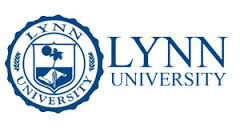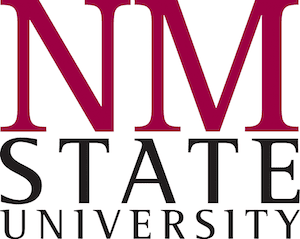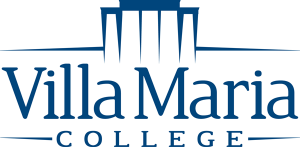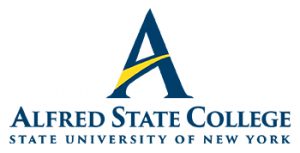The following list focuses on the most affordable bachelor’s degrees in animation for students considering this exciting career path. Animation is a multidisciplinary field that involves criminology, computers and technology, mathematics, psychology, art, and graphic design. In particular, animation and graphic design are two areas that are gaining in popularity across the country, leading more students to pursue bachelor’s programs in this industry. Whether you are only considering working in animation or you have a specific career path in mind, keep reading for our ranking of the 15 most affordable bachelor’s degrees in animation.
Featured Programs
Methodology
We developed the following ranking list to help prospective undergraduate students narrow down their options in terms of bachelor’s degrees in animation. Rankings are based on information provided by the National Center for Education Statistics (NCES) College Navigator database and each school’s website. We conducted a search for Bachelor’s in Animation degrees at the NCES and narrowed down the initial pool of 20 schools into the top 15 programs based on the following ranking methodology in categories such as:
- tuition
- graduation rates
- student:faculty ratios.
Average Cost of Attendance
We know how overwhelming it can be to compare the cost of tuition when evaluating schools and programs. After all, how can you be certain you are getting your money’s worth? When looking at Bachelor’s in Animation degrees, consider the quality of the program in relation to the cost of tuition. Also, keep in mind that not all expensive programs are great and not all low cost programs are terrible. We provided both in-state and out-of-state tuition for each program but only awarded points based on the average of the two rates.
Points:
Under $10,000: 3 points
$10,001 to $20,000: 2 points
$20,000 or more: 1 point
Graduation Rates
The graduation rate is a solid indicator of the quality of a school’s academic programs, faculty, and student learning outcomes. It is also a measure of student satisfaction. For instance, if a school has high graduation rates, you can generally conclude that:
- students found the school affordable
- they received the academic support they needed to succeed
- students were pleased by the faculty
For this reason, we’ve awarded the fewest amount of points to schools with the lowest graduation rates and the most points to those with the highest graduation rates.
Points:
More than 50 percent: 3 points
Between 30 percent and 50 percent: 2 points
Less than 30 percent: 1 point
Student/Faculty Ratio
Many students enjoy the academic opportunities and learning environments of larger universities and colleges. Those seeking a small, more personalized experience may benefit from institutions with smaller student/faculty ratios. These schools are more likely to provide opportunities for individualized and specialized studies, close student-faculty relationships, and mentoring. We awarded the most points for the lowest student/faculty ratios and the fewest points for the highest student:faculty ratios as follows:
Points:
10:1 or lower: 3 points
11:1 to 15:1: 2 points
Higher than 15:1: 1 point
Frequently Asked Questions:
- What are the Career Options for a Bachelor’s in Animation Degree?
- How Much Can You Earn in This Field?
- What Will You Study in a Bachelor’s Program in Animation?
- How Do You Choose a Bachelor’s Degree in Animation?
- How Long Does it Take to Earn an Undergraduate Animation Degree?
- What Else Can You Expect From a Bachelor’s in Animation Degree Program?
- Are There Any Professional Organizations in Animation?
SUMMARY RANKING OF TOP 10 MOST AFFORDABLE Bachelor’s degree in animation:
- University of Hawaii at Manoa
- University of Arkansas, Fort Smith
- Alfred State College of Technology
- Sam Houston State University
- Ball State University
- Villa Maria College
- Huntington University
- Eastern Michigan University
- Morgan State University
- New Mexico State University
Ranking Top 15 Most Affordable Bachelor’s Degrees in Animation
15. Missouri Western State University – BFA in Digital Animation
St. Joseph, Missouri

Points: 4
Program Website
Missouri Western State University’s affordable Bachelor of Fine Arts in Digital Animation degree. It provides students the opportunity to become proficient in skills that are useful for producing a wide range of animation for:
- interactive media
- gaming
- broadcast television
- cinema
Digital animation coursework balances practice and theory with an educational emphasis on:
- mastering digital animation technologies
- honing artistic identity
- researching new strategies for learning through digital advances
Students may also specialize in an area based on their talents and interests. This low cost degree program consists of 120 credits of coursework in areas such as:
- character animation or digital animation production
- interactive design
- design software applications
- digital 3D modeling
- motion graphics
- senior seminar and exhibit.
Degree Options:
Bachelor of Fine Arts (B.F.A.) in Digital Animation
Average Program Cost: $10,518
In-State Tuition: $7,570
Out-of-State Tuition: $13,465
Graduation Rate: 29 percent
Student/Faculty Ratio: 16:1
14. Lynn University – BFA in Computer Animation
Boca Raton, Florida

Points: 5
Program Website
Lynn University offers a 126-credit-hour affordable BFA in Computer Animation. Students learn advanced computer-generated techniques and digital storytelling as well as:
- technical direction
- cinematic lighting
- 3D modeling
- storyboarding
- screenplay writing
Students may choose from either general or game art concentrations and learn from an experienced faculty. The school also takes pride in its iPad-powered learning. The mobile curriculum provides better engagement with interactive tools and lessons to connect students with professors and classmates. Core computer animation courses cover topics in:
- belief and reason
- quantitative reasoning
- scientific literacy
- career preparation
Major requirements include:
- 2D motion graphics
- digital imaging and painting
- graphic design
- 3D animation
- rigging
- modeling.
Degree Options:
Bachelor of Fine Arts in Computer Animation
Average Program Cost: $38,210
In-State Tuition: $38,210
Out-of-State Tuition: $38,210
Graduation Rate: 51 percent
Student/Faculty Ratio: 17:1
Featured Programs
13. East Tennessee State University – BS in Digital Media
Johnson City, Tennessee

Points: 5
Program Website
East Tennessee State University offers an affordable Bachelor of Science in Digital Media program with a concentration in digital animation. Students must complete 120 credit hours of coursework. This includes 35 hours of a digital media core in:
- visual effects and motion graphics
- digital game design
- digital animation
- contemporary art
- a capstone project
The digital animation concentration consists of 28 hours in areas such as:
- technical direction
- visual effects compositing
- effects animation
- high-fidelity modeling for entertainment
- character animation
- 3D animation
Students may tailor their low cost degree through electives in:
- web development
- studio art
- filmmaking
- digital media
- photography
- drawing
- storytelling
- acting.
Degree Options:
Digital Media Major, B.S. (Digital Animation Concentration)
Average Program Cost: $17,571
In-State Tuition: $8,679
Out-of-State Tuition: $26,463
Graduation Rate: 41 percent
Student/Faculty Ratio: 15:1
12. Ferris State University – Bachelor of Applied Science in Digital Animation and Game Design
Big Rapids, Michigan

Points: 5
Program Website
Students looking to earn an affordable Bachelor’s in Animation degree can pursue Bachelor of Applied Science in Digital Animation and Game Design from Ferris State University’s College of Education and Human Services. This low cost degree program consists of foundation courses in programming, 3D animation, business, and design, and students can further focus their studies by concentrating on areas such as 3D animation or game development. A general concentration that combines the strongest areas of digital media is also offered. Prior to graduating, undergraduates will complete an internship to gain real-world experience and develop the connections necessary to succeed in their chosen career path.
Degree Options:
Bachelor of Applied Science in Digital Animation and Game Design
Average Program Cost: $16,240
In-State Tuition: $13,018
Out-of-State Tuition: $19,461
Graduation Rate: 45 percent
Student-to-Faculty Ratio: 16:1
11. Colorado Mesa University – BFA in AFP&MD

Points: 5
Program Website
Colorado Mesa University’s Bachelor of Fine Arts in Animation, Film, Photography, and Motion Design (AFP&MD) is a unique and affordable program that begins with traditional freshman-level drawing and composition courses. AFP&MD majors then begin a three-tiered program, the first tier of which consists of courses in animation, film, photography, and motion design. The second tier offers intermediate-level courses where students expand on what they have learned and explore applications of space, movement, and time. Finally, the third tier provides advanced levels of study as well as opportunities for majors to produce a high-quality, individual portfolio. Undergraduates also have options for travel, collaborative work, and experimentation.
Degree Options:
BFA in Animation, Film, Photography and Motion Design (AFP&MD)
Average Program Cost: $15,842
In-State Tuition: $9,243
Out-of-State Tuition: $22,440
Graduation Rate: 33 percent
Student-to-Faculty Ratio: 21:1
10. New Mexico State University – BCM-ANVE
Las Cruces, New Mexico

Points: 5
Program Website
New Mexico State University confers an affordable Bachelor of Creative Media in Animation and Visual Effects (BCM-ANVE) that focuses on the business, craft, and art of storytelling. Although students choose an emphasis area, they study all aspects of digital arts and digital filmmaking, whether they are aspiring cinematographers, editors, directors, animators, or writers. Practice and theory are integrated at every step as students manipulate images, sound, and text using industry-standard technology. The Creative Media Institute houses a production space, animation lab, post-production lab, and state-of-the-art digital project screening room. Bachelor’s students enrolled in this low cost degree program must complete 120 credits in order to graduate, including 63 credits in foundation courses, 35 credits of common core classes, six credits of Viewing a Wider World, and 16 credits of electives.
Degree Options:
Bachelor of Creative Media in Animation and Visual Effects (BCM-ANVE)
Average Program Cost: $15,438
In-State Tuition: $7,368
Out-of-State Tuition: $23,508
Graduation Rate: 33 percent
Student-to-Faculty Ratio: 16:1
9. Morgan State University – Bachelor’s in Animation Programs
Baltimore, Maryland

Points: 5
Program Website
Morgan State University confers two affordable 120-credit-hour Bachelor’s in Animation Programs: a Bachelor of Arts in Screenwriting and Animation (SWAN) and a Bachelor of Fine Arts in Screenwriting and Animation (SWAN). Within the SWAN major, students may choose from three concentrations: computer animation, integrated media writing, and film and television writing. Although each concentration has a specific set of courses, all SWAN majors take classes in visual storytelling and writing, film studies, fluency in writing and creative expression, ethical business practices, and entrepreneurship. Students also gain production field experience, producing documentaries, short films, and webisodes. In addition, each concentration includes a two-course, capstone-like senior studio project and a film/digital storytelling internship. More than just a film major, SWAN lays the groundwork for evolving content producers, filmmakers, and artists to forget career paths in business, science, education, and entertainment.
Degree Options:
Bachelor of Arts in Screenwriting and Animation (SWAN)
Bachelor of Fine Arts in Screenwriting and Animation (SWAN)
Average Program Cost: $13,034
In-State Tuition: $7,900
Out-of-State Tuition: $18,167
Graduation Rate: 38 percent
Student-to-Faculty Ratio: 13:1
8. Eastern Michigan University – BS in Simulation, Animation, and Gaming
Ypsilanti, Michigan

Points: 5
Program Website
Eastern Michigan University confers a 124-credit affordable BS degree in Simulation, Animation, and Gaming that combines story development, creative writing, programming, and traditional art mediums with coursework focusing on lighting, animation, rigging, modeling, and camera work in 3D. Students must complete 78 hours in the major in areas such as texturing and mapping, SAG movement, SAG rigging, environment design, principles of animation, lighting and camera techniques, web publishing technology, 3D design, story development, and graphics for simulation. Three hours of electives are also required, and students may choose from an independent study, special topics, advanced modeling, game development and planning, cooperative education, or an introduction to game engines.
Degree Options:
Bachelor of Science in Simulation, Animation and Gaming
Average Program Cost: $12,430
In-State Tuition: $12,430
Out-of-State Tuition: $12,430
Graduation Rate: 40%
Student-to-Faculty Ratio: 17:1
7. Huntington University – BS in Animation
Huntington, Indiana

Points: 6
Program Website
At Huntington University, students pursuing the affordable 128-credit-hour BS in Animation degree focus on story, character, motion, and image. Faculty members are experienced animation professionals who have worked on their own acclaimed projects, and animation students have access to a screening theater, a Foley pit, a sound stage, editing labs, a green screen, and traditional, computer, and stop-motion labs. From the first semester, students take animation coursework in the most complex 3D computer technology, character design, advanced motion graphics, and both 2D, hand-drawn and stop-motion animation. In addition to classes, students have opportunities to showcase their work in festivals and work on projects for nonprofits and festivals around the world.
Degree Options:
Bachelor of Science in Animation
Average Program Cost: $26,180
In-State Tuition: $26,180
Out-of-State Tuition: $26,180
Graduation Rate: 60 percent
Student-to-Faculty Ratio: 13:1
Featured Programs
6. Villa Maria College – BFA in Animation
Buffalo, New York

Points: 6
Program Website
Villa Maria College offers an affordable BFA in Animation that consists of 121 credits of coursework in areas such as 2D animation, animatics and audio, modeling for 3D animation, history of animation, and film, theory, and technique. Students must also complete a sophomore individual film project, a two-course senior capstone thesis, and an internship. Undergraduates in this low cost degree program may choose from one of five specialized tracks: lighting and special effects, gaming, character animation, 3D, or 2D/alternative techniques. Graduates are prepared for careers as flash animators, visual effects artists, character designers, 2D/3D character animators, and video game animators.
Degree Options:
Bachelor of Fine Arts (B.F.A.) in Animation
Average Program Cost: $22,080
In-State Tuition: $22,080
Out-of-State Tuition: $22,080
Graduation Rate: 36 percent
Student-to-Faculty Ratio: 9:1
5. Ball State University – BA/BFA/BS in Animation
Muncie, Indiana

Points: 6
Program Website
Ball State University’s affordable bachelor’s degree in visual arts and animation provides a comprehensive digital animation experience that explores character design, storyboarding traditional 2D animation, stop-motion, and 3D animation as well as visual effects, character animation, lighting, texturing, and modeling. This nationally ranked inexpensive bachelor’s degree program teaches up-to-date animation techniques, and students learn how to use industry-standard animation software. The curriculum leads students through a foundation of classic arts courses before moving into a strong technical core, and students have numerous opportunities to participate in collaborative, hands-on projects with faculty and students in other courses of study. Undergraduates must also complete a senior project prior to graduating.
Degree Options:
Bachelor of Arts in Animation
Bachelor of Science in Animation
Bachelor of Fine Arts in Animation
Average Program Cost: $18,182
In-State Tuition: $9,896
Out-of-State Tuition: $26,468
Graduation Rate: 62 percent
Student-to-Faculty Ratio: 17:1
4. Sam Houston State University – BFA in Computer Animation
Huntsville, Texas

Points: 6
Program Website
Students may pursue an affordable Bachelor of Fine Arts (B.F.A.) in Computer Animation from Sam Houston State University and gain training in the techniques and principles used to create animated imagery for:
- the Internet
- film and video
- games
This low cost degree program consists of:
- a core curriculum
- art department foundation courses
- art department core classes
- 45 credits in computer animation.
To earn the inexpensive BFA in Computer Animation degree, majors complete 120-credit hours of coursework in:
- painting
- life drawing
- ceramics
- art history
Students will also take animation-specific classes in:
- website development
- experimental animation
- character animation
- advanced 3D computer animation
- 2D interactive animation
- a capstone-like animation portfolio.
Degree Options:
BFA in Computer Animation
Average Program Cost: $16,408
In-State Tuition: $10,183
Out-of-State Tuition: $22,633
Graduation Rate: 51 percent
Student/Faculty Ratio: 23:1
3. Alfred State College of Technology – BS in Digital Media and Animation
Alfred, New York

Points: 6
Program Website
Alfred State College of Technology offers an affordable Bachelor of Science (B.S.) in Digital Media and Animation to students looking to pursue careers in:
- fine art
- media design
- digital imaging
- interactive media
- animation
This low cost bachelor’s degree program provides students with a broad range of problem-solving, creative, and technical skills for careers in animation and new media. At the core of the program is a sequence of classes that enhance individual artistic creativity. At the same time the classes provide instruction in industry-standard computer graphics software and the traditional arts. Students complete coursework in:
- 3D design and color
- 3D animation
- visual effects
- visual communication
- digital foundations
- interactive design
Other requirements include a portfolio and a senior studio project.
Degree Options:
Bachelor of Science in Digital Media and Animation (DGMA)
Average Program Cost: $9,862
In-State Tuition: $8,327
Out-of-State Tuition: $11,397
Graduation Rate: 37 percent
Student/Faculty Ratio: 18:1
2. University of Arkansas, Fort Smith – BS in Animation Technology
Fort Smith, Arkansas

Points: 6
Program Website
The affordable BS in Animation Technology at the University of Arkansas, Fort Smith prepares students to be managers and practitioners in a wide variety of computer graphics-related jobs. It’s designed for students who have already completed an Associate of Applied Technology or an Associate of Applied Science program. These students will have 44 hours of technical professional coursework in computer graphics technology. To graduate, students of this program must complete 120 credit hours of animation coursework. Students may tailor their degree with electives. Classes are available in:
- science and medical applications
- motion for applied animation
- manufacturing and robotics applications
- lighting and rendering
- engineering and architecture applications
- digital production techniques
- 3D advanced concepts
A senior capstone project is also required.
Degree Options:
Bachelor of Science in Animation Technology
Average Program Cost: $9,114
In-State Tuition: $5,577
Out-of-State Tuition: $12,650
Graduation Rate: 30 percent
Student/Faculty Ratio: 18:1
1. University of Hawaii at Manoa – BA in Creative Media
Honolulu, Hawaii

Points: 7
Program Website
The Academy for Creative Media (ACM) at the University of Hawaii at Manoa emphasizes:
- storytelling applications
- theories
- skills
These run across multiple platforms of digital media and within a context of aesthetic and cultural values. Our most affordable school offers a 120-hour Bachelor of Arts in Creative Media. Students may choose from three tracks:
- critical studies
- digital cinema
- animation
Specifically, the animation concentration provides unique opportunities in:
- character animation, including video game design
- 3D computer graphics
- digital paperless animation
- traditional hand-drawn techniques
Other courses may include:
- drawing for animation
- computer animation production
- 3D cinematography and dynamics
- screenwriting
- genre and narrative theory
- 3D character animation
An independent group project and a creative media internship are also required.
Degree Options:
B.A. in Creative Media
Average Program Cost: $22,986
In-State Tuition: $11,970
Out-of-State Tuition: $34,002
Graduation Rate: 60 percent
Student/Faculty Ratio: 10:1
Frequently Asked Questions
What are the Career Options for a Bachelor’s in Animation Degree?
Animators are storytellers who use 3D modeling programs, electronic tools, and hand-drawn techniques to bring their designs to life. With a bachelor’s in animation degree, graduates are prepared for entry-level careers as:
- video game illustrators
- website developers
- movie makers
- graphic designers
While some animators may choose to work independently as freelancers, all animators must effectively communicate to collaborate with colleagues and clients.
Many graduates go on to earn master’s and doctoral degrees, enabling them to work as program directors and project managers. With certification and specialized training, animators may even become digital marketing specialists or medical illustrators,. Or they may choose to pursue unconventional careers in forensic science and business marketing. The following are four growing careers in this field:
- Art Director
- Director/Producer
- Multimedia Artist and Animator
- Web Developer
How Much Can You Earn in This Field?
Although salary will depend on skill level, years of experience, and level of education, multimedia artists and animators earned $70,530 per year or $33.91 per hour as of May 2017, according to the U.S. Bureau of Labor Statistics. The highest 10 percent earned more than $123,060, while the lowest 10 percent earned less than $39,330. In addition, the median annual wages for multimedia artists and animators in the top industries in which they worked were:
- Software publishers: $80,850
- Video and motion picture industries: $77,240
- Computer systems design and related services: $72,820
- Public relations, advertising, and related services: $67,700
Skilled animators work in diverse industries, from large production companies to small design firms and studios. They may also work as entrepreneurs and freelancers. The BLS indicates that positions are projected to grow eight percent through 2026, about as fast as the average for all occupations. This growth will be due to increased demand for visual effects and animation in:
- television
- movies
- video games
Job growth may be slowed, however, by companies hiring artists and animators who work overseas in an attempt to save money on animation.
What Will You Study in a Bachelor’s Program in Animation?
Undergraduate animation degrees follow a similar structure to other bachelor’s degrees. Within four years, students complete 120 credit. Introductory coursework focuses on topics that include:
- pre-visualization
- character theory
- animation history
Students also apply ideas through project-based assignments and laboratory practice. As they progress through the program, students develop a portfolio that they display for review as part of the capstone requirement. Internships and practicum experiences are also common program components.
Computer animation degree plans start with introductory coursework in visual theory, design history, and the fundamentals of 3D and 2D animation. Beyond these core topics, class options vary by specialization track and program. Some schools focus on the fine arts, while others emphasize product- and technical-related aspects of animation. The list below shows five common courses in this field:
- Media Storytelling
- 3D Modeling and Animation
- Print Media and Graphics Layout
- Digital Interactivity
- Digital Project Management
How Do You Choose a Bachelor’s Degree in Animation?
Beyond course offerings, students must consider the cost of a program. In general, online bachelor’s in animation degrees offer lower tuition rates, incentivizing distance learners with scholarships, discounts, and flat rates. However, traditional programs also provide financial assistance in the form of work-study programs, for instance, which online students cannot access. Traditional students also generally benefit from more specialization and course options. Although online degrees are flexible in scheduling, they offer more linear content. Regardless of whether you pursue an online or an on-campus program, it is important to attend an accredited institution.
Finally, animation degree candidates should consider location when choosing a program. Although some universities and colleges do not take residency into consideration when calculating tuition, out-of-state students are often charged more. Location also dictates advancement opportunities and career prospects. Furthermore, many animators choose to pursue certification programs, some of which operate state-specific examinations and training programs.
How Long Does it Take to Earn an Undergraduate Animation Degree?
Students earning a bachelor’s degree in animation are typically required to complete 120 credits over the course of four years. Those looking to expedite degree completion may be eligible to take classes during optional winter and summer sessions as well as full course loads. Some institutions provide accelerated degree plans that allow students to complete the program within two years or combine undergraduate and graduate degree programs to be completed in five years.
In most cases, students must complete a specific number of prerequisite classes prior to enrolling in an accelerated Bachelor’s in animation program. Students may also be required to show relevant work experience as it relates to their educational and professional goals. Accelerated degrees typically operate on an eight-week schedule through hybrid or fully online delivery methods. Transfer credits can help to reduce the amount of time required to complete the program. Schools may allow students to apply career experiences, professional training, and external academic work toward their degree requirements via prior learning assessments.
Adult students and working professionals generally prefer the flexibility of an online degree program since they often have to juggle family life and careers. Adult learners may choose to take part-time courses each time, but it is important to keep in mind that part-time enrollment may lead to higher tuition prices and it may limit financial aid options, particularly work-study and fellowship opportunities.
What Else Can You Expect From a Bachelor’s in Animation Degree Program?
Universities and colleges typically offer animation as a concentration under a general graphic design or visual arts program. However, standalone animation degrees do exist and feature their own specializations, including:
- character animation
- advertising
- interface animation
- video game design
- typography/calligraphy
- film directing
- print media
- motion media
Students may also apply their skills in areas like:
Are There Any Professional Organizations in Animation?
An undergraduate degree in animation provides the training and skills students need for job entry. However, in order to grow as a professional and sustain a career, students may wish to consider engaging with professional organizations. Although most organizations require annual membership dues, the associated perks include:
- networking opportunities through international summits
- national conferences
- local gatherings
Professional organizations also provide research grants and academic scholarships. They also provide career guidance through skill development programs, webinars, and job listings. The following are five of the top professional organizations that aspiring and current animators may wish to consider joining:
- American Institute of Graphic Arts
- Graphic Artists Guild
- Society of Animation Studies
- International Game Developers Association
- Freelancers Union
As you can see, there are many factors to consider when choosing an animation program to meet your needs, budget, professional objectives, and career goals. Regardless of whether you’re an undergraduate student fresh out of high school or an adult learner looking to make a career change, there are number of high-quality, affordable bachelor’s in animation degrees available to help you get started.
AS Staff
This concludes our ranking of the Top 15 Most Affordable Bachelor’s Degrees in Animation.
Other Rankings of Interest:
- 20 Tuition-Free Colleges
- 30 Most Attractive Yet Affordable College Campuses
- The 50 Most Affordable Colleges with the Best Return
- 25 of the Oldest American Colleges and Universities
- 25 Most Affordable Large, Private, Nonprofit Bachelor’s Colleges
- 30 Most Inviting Yet Affordable College Dorms in America
- 25 Largest HBCU Bachelor’s Colleges by Enrollment
- The 30 Most Affordable Online Bachelor’s-Granting Historically Black Colleges/ Universities
- These 30 Colleges are Reversing the Rise in Tuition
- 25 Most Exclusive Public Bachelor’s Colleges by Admission Rate
- 50 Most Entrepreneurial Schools in America

 The Best Colleges
The Best Colleges The Lowest Costs
The Lowest Costs The Highest Returns
The Highest Returns